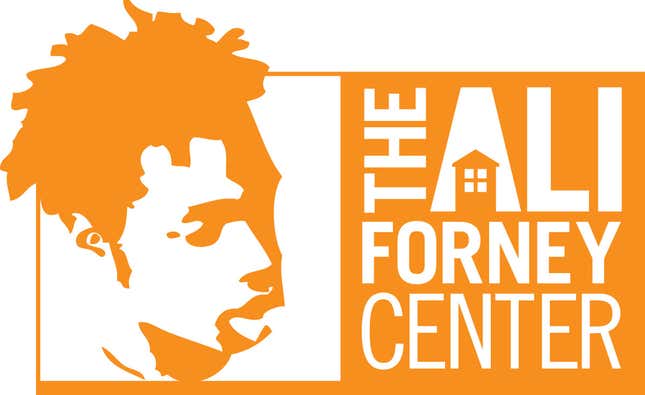How One Center for Vulnerable LGBTQ+ Youth Is Helping Its Clients During the Pandemic
Latest

The coronavirus pandemic has caused strain and hardship in so many ways and for so many people—but one demonstrable effect is that it has made the vulnerable more vulnerable. If it was already difficult to be an LGBTQ youth whose parents or caretakers don’t understand or accept their sexuality/gender identity, that stress is magnified during a time when we, as a society, have been advised to stay indoors. The situation can effectively trap these people between the forces of a global pandemic outside and virulent bigotry inside.
The New York-based Ali Forney Center (AFC) continues to serve homeless LGBTQ youth, even during a global pandemic, providing housing, mental health support, meals, and a transitional living program that teaches youth to live independently. Though the AFC has been impacted by covid-19 in several ways, it is largely meeting the increased demands, according to executive director Alex Roque, who talked to Jezebel last week about the AFC’s operation in the midst of a crisis. The organization’s drop-in center, which serves new clients with no place to go, remains open (though it has moved to the organization’s Bea Arthur Residence in Manhattan’s East Village). There’s been an increased demand—in part because many of their former clients who were in college have been sent home, which means needing to return to one of the 18 AFC facilities around the city. Despite this, AFC has managed to increase its meal budget and spending for its recently out-of-work clients. (An info sheet sent out by AFC’s communications department says that 90 percent of the organization’s housed clients have lost their jobs as a result of the pandemic.) Further, salaries of AFC’s essential workers have increased by almost 50 percent. “We really felt strongly that we needed to recognize how critical and how valued our essential workers are,” Roque told me.
In our conversation, Roque explained how AFC has managed to do it, and how it is managing in general. Our interview has been edited and condensed.
JEZEBEL: Overall, how is the Ali Forney Center been managing during this pandemic?
ALEX ROQUE: AFC is in a unique position because we are an essential services provider that’s caring for a largely disenfranchised, uncared-for population of young people who are rejected by their families because of their LGBTQ identity. Around the country and across the world, people have been asked to stay home and to shelter in place and find safety in their homes, and comfort in their families. Our young people don’t have any of that, so it’s kind of a punctuation to what their realities are that even in these dark days and awful circumstances, they have nowhere to go.
Things are pausing. Pollution is down. Wild animals are running free. Critical care hospitalization—like, heart attacks and strokes—has also declined significantly, according to the New York Times. I thought that maybe homophobia and transphobia would also just take a little pause. That hasn’t been the case. We’re seeing an increase in young people in our care and a demand for our work. A lot of it has to do with young people who were in our care before who went off to college and then were sent back because of shut-downs and we were their home before college. Some of it has been with young people who left their homes at younger ages because of homophobia and transphobia and were employed and have lost their jobs and now have no family to rely on. And another part of it is that a number of youth services providers have shut down in the city. A number of the shelters have shut down as a result of staffing issues, a number of community spaces and things like that have closed their doors. That’s increased the demand for our work. But there’s this understanding that covid-19 is disproportionately affecting communities of color, disproportionately affecting communities struggling with poverty and lacking access to care. It’s true for our young people. Among the most marginalized communities, our young people are still marginalized. Among LGBT youth, our young people are homeless LGBT youth.
Are you able to provide the same services that you were providing pre-coronavirus?
The drop-in center was moved to the Bea Arthur Residence at the recommendation of our medical provider. We have an onsite medical clinic and when covid started, we retained our medical provider to advise us on how to operate following CDC protocol. The CDC protocol was that there should be no more than 10 people congregating in a space. That’s difficult for us to do at the drop-in center, especially because we had on average anywhere between 60 and 80 young people coming there a day. We moved to a smaller facility where we can structure it more: housing referrals, offering meals, and offering crisis intervention for young people at Bea Arthur, and then more importantly, making sure we’re getting them into a stable bed as we work through this. Initially, it was a big increase and then when the new protocols came into place on March 23 about stay at home and 10 people or less, we moved it to Bea Arthur. A bulk of our services that were drop-in related were moved online. About 70 percent of our counseling, mental health, psychotherapy, medical, and educational services moved online. We’re offering those online to young people and we’re still doing a structured drop-in program.
So, if someone is sheltering in place with a homophobic or transphobic parent, they still can leave and come to you?
-

-

-

-

-

-

-

-

-

-

-

-

-

-

-

-

-

-

-

-

-

-

-

-

-

-

-

-

-

-

-

-

-

-

-

-

-

-

-

-








































